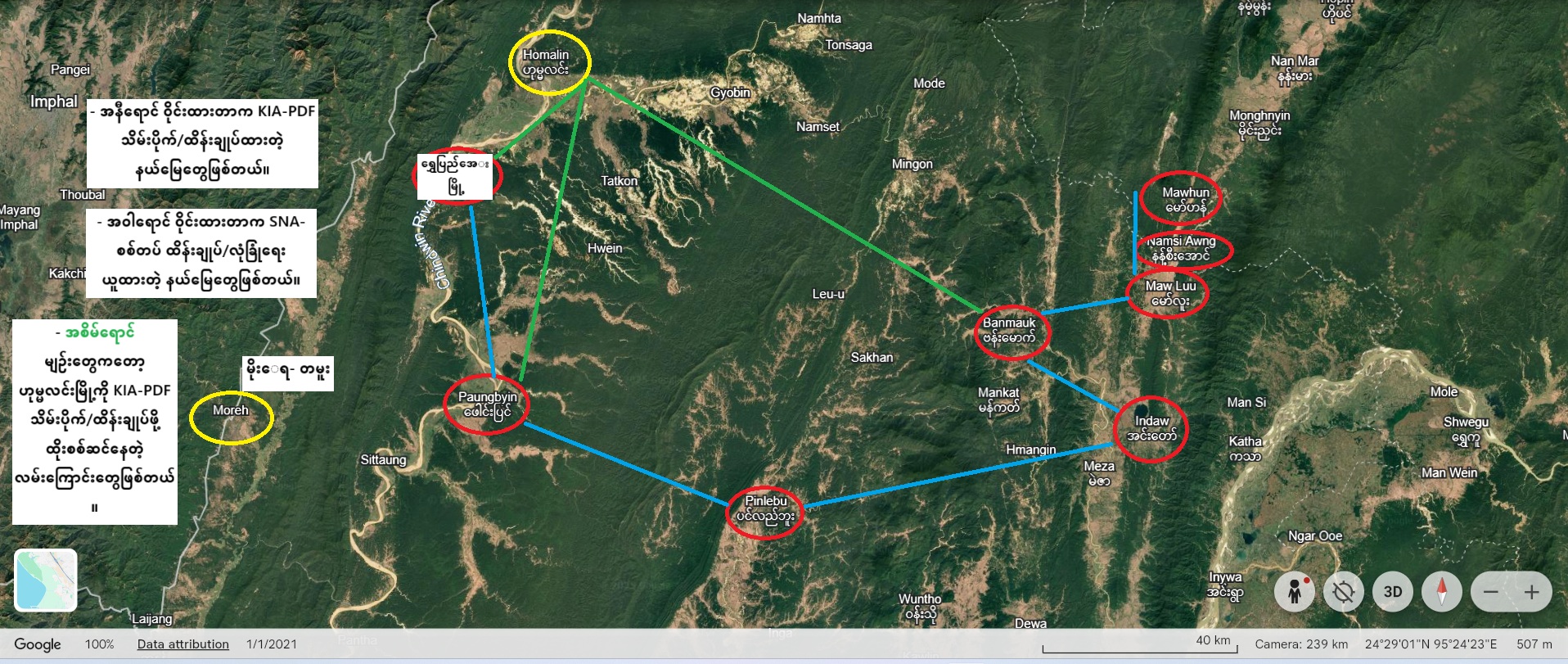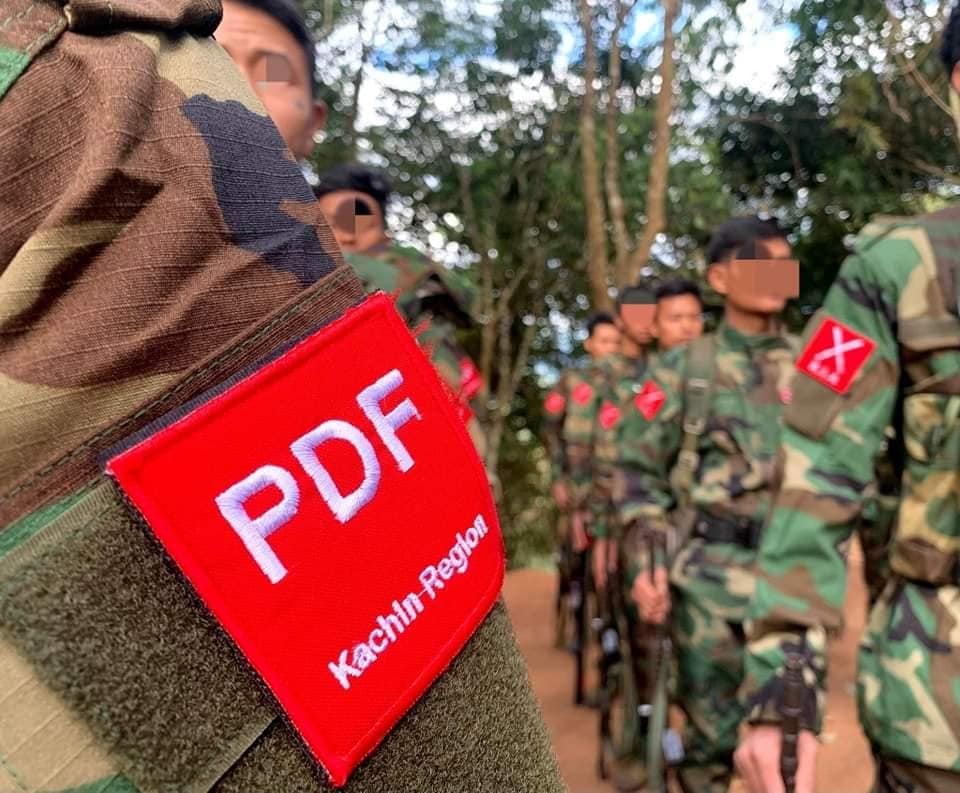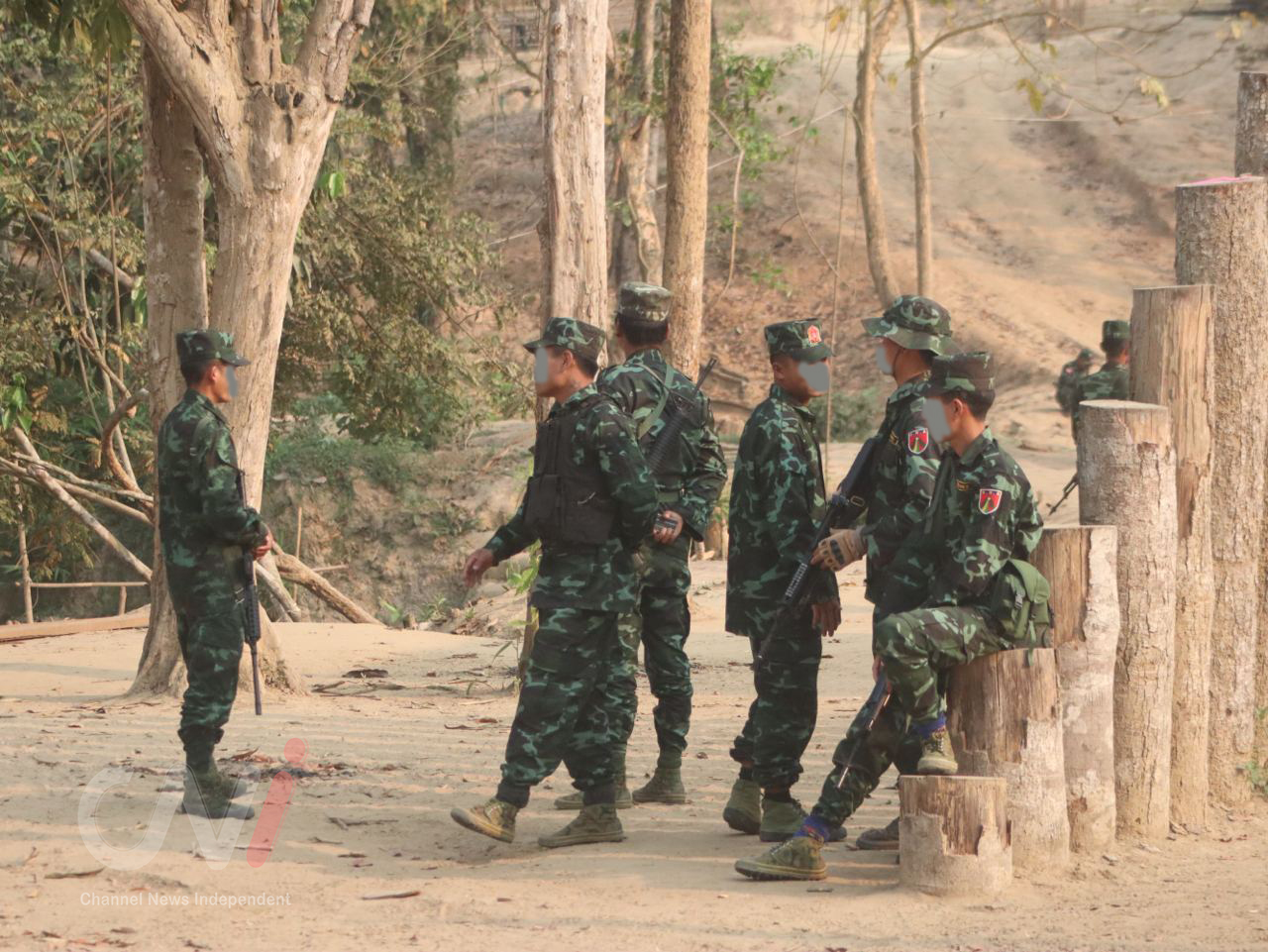CNI Article
28 November 2025
By Chit Min Tun
Sagaing Region and Chin State, located in Myanmar’s northwestern area, have become well-known since after 2021 as territories dominated by revolutionary forces and rebel groups.
This is in contrast to the years before 2020, when Sagaing Region and Chin State were generally peaceful, stable areas where such revolutionary or rebel groups could not exert control.
However, after 2021, so many revolutionary/insurgent groups emerged, and armed conflicts escalated to the level of town-capture battles. As a result, hundreds of thousands of civilians were displaced and forced to flee the conflict.
Consequently, people were unable to continue their agricultural and livestock activities, and trade flows were severely disrupted. This led to price inflation and shortages of essential goods.
In addition, citizens holding Sagaing Region ID (5/) or Chin State ID (4/) have faced strict inspections when traveling to other regions.
These conditions have resulted from ongoing instability and warfare across the entire northwestern region.

Towns controlled by armed groups
To bring an end to the conflicts and restore stability, the Northwest Command (NaMaHka) holds primary responsibility. Therefore, it must answer a critical question: How will the NaMaHka Command manage and resolve the dominance of revolutionary/insurgent groups across the northwestern region?
As this question remained unanswered — and due to alleged abuses of authority and corruption — Northwest Command Commander Brig-Gen Myo Min Htwe was arrested in November 2025 and removed from his post.
After his removal, Maj-Gen Kyaw Thu Ya was appointed as the new Commander of the Northwest Command.
Thus, Commander Maj-Gen Kyaw Thu Ya now faces the task of prioritizing the cessation of hostilities and restoration of stability in Sagaing Region and Chin State.
The NaMaHka Command is expected to attempt to retake the towns under insurgent control in Sagaing Region, such as: Indaw, Banmauk, Pinlebu, Shwe Pyi Aye, Hkamti, Kham Pat.
It must also prioritize control over the major highways, including: Monywa–Mandalay Highway, Shwebo–Mandalay Highway, Mandalay–Shwebo–Myitkyina Highway.
Additionally, the command may attempt to secure the Tamu–Kham Pat–Monywa route and the Himawinta Road.
Similarly, if the NaMaHka Command manages to secure the access routes from Sagaing Region into Chin State, it may attempt further offensives into Chin State areas dominated by insurgent forces.

KIA–PDF joint forces
However, the command still faces major questions:
Does the Northwest Command have enough manpower to launch these operations? If not, how will they gather or consolidate additional forces? Which forces will they ally with to strengthen their capabilities?
In Sagaing Region, the following groups currently act as intermediaries or maintain a presence:
Shanni Nationalities Army (SNA)၊ NSCN-K/AM၊ NSCN-K/YA၊ NSCN-IM၊ NSCN-IM/HS၊ Meitei armed groups.
Kuki Nationalities Army (KNA/KNO), ENNO/ENDA and Naga PDF are fighting against the Tatmadaw.
Meanwhile, numerous PDFs from townships such as Homalin, Hkamti, Phaung Byin, Mawlike, Tamu, Kale, Mingin, Kantbalu, Indaw, Banmauk, Shwebo, Monywa, Yinmabin, Pale, Wetlet, Tigyaing, Kham Pat — operate under, or in alliance with, the Kachin Independence Army (KIA), engaging in attacks against the Myanmar military (Tatmadaw).
Similarly, the Arakan Army (AA), ABSDF, Karen National Union (KNU), and Chin National Front (CNF) are active in Sagaing Region and are also attacking the Myanmar military.

Shanni Nationalities Army (SNA)
Inside Chin State, the Zomi Revolutionary Army (ZRA/ZRO) and Kuki armed groups maintain a neutral stance, while CNF, AA, and various Chin-ethnic PDFs continue to fight the Myanmar military.
With so many revolutionary/insurgent groups dominating the northwestern region, it is extremely difficult for the Northwest Command to bring stability or end the conflicts — making it a highly complex problem.
In any case, Sagaing Region and Chin State will never return to their pre-2020 conditions.
This is because there are now hundreds of armed groups, and there is no possibility of fully disarming them.
For this reason, the challenges for the Northwest Command will likely persist even after the elections.
Whether the command can find a solution during or after the election period remains to be seen — otherwise, this situation will continue to be a major headache for the Northwest Command.




